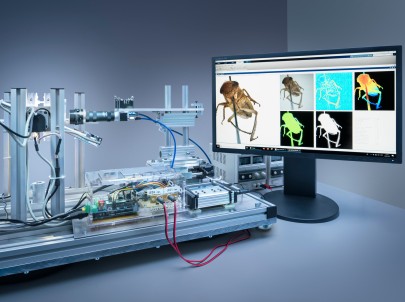3D functional morphology
We apply different techniques to understand the complex three-dimensional morphology of arthropods: Synchrotron x-ray tomography (SR-µCT) allows non-invasive imaging of the internal morphology of small arthropods with a sub-micron resolution. Using such data, we can estimate bio-mechanical models to understand processes of miniaturization. To digitize the external 3D-morphology of insects including their natural colors and surface textures we have developed DISC3D (Darmstadt Insect Scanner), a novel system combining extended-depth-of-field with multi-view imaging. DISC3D is, in the meantime, also used for 3D-digitization of insect museum collections.
Forest ecology
The climate crisis also heavily affects our forests. Trees suffer from heat and increasing drought, and this also affects the soil microclimate and the soil-dwelling organisms. As a member of the Lore-Steubing-Institute, we are investigating the microclimatic changes in Hessian forest soils, with a special focus on the Darmstadt city forest. We focus on the dynamics of soil temperature, soil moisture and soil animal communities. In the interdisciplinary FiF-project ForestHealth we combine quantitative and qualitative aspects of canopy cover with chemical, microclimatic and faunistic parameters of the forest floor.
We also study the regeneration dynamics of a tropical rainforest in Ecuador. In the REASSEMBLY research unit we investigate leaf litter arthropod communities and the role of alkaloids in predator-prey interactions of poison-dart frogs and their arthropod prey (SP2).
Chemical ecology
Chemical substances play a major role in species interactions. Allomones are chemicals that evolved for defense (usually against predators), and affect predator-prey dynamics. Some defensive substances may also be attractive to some predators, e.g., from cheese mites or even deliver chemical protection to the consumer (e.g., poison frogs). Nutritional quality strongly influences biochemical processes of an organism, and affects not only chemical defensive substances but also life history and morphology.
Why sex?
One of the major questions in biology is: Why do the vast majority of species reproduce by sexual processes (with mostly two sexes), accepting the costs of producing males? One group of animals, oribatid mites, has evolved several clades that abandoned sex and males – for hundreds of millions of years, and even diversified into distinct genetical and morphological species.




